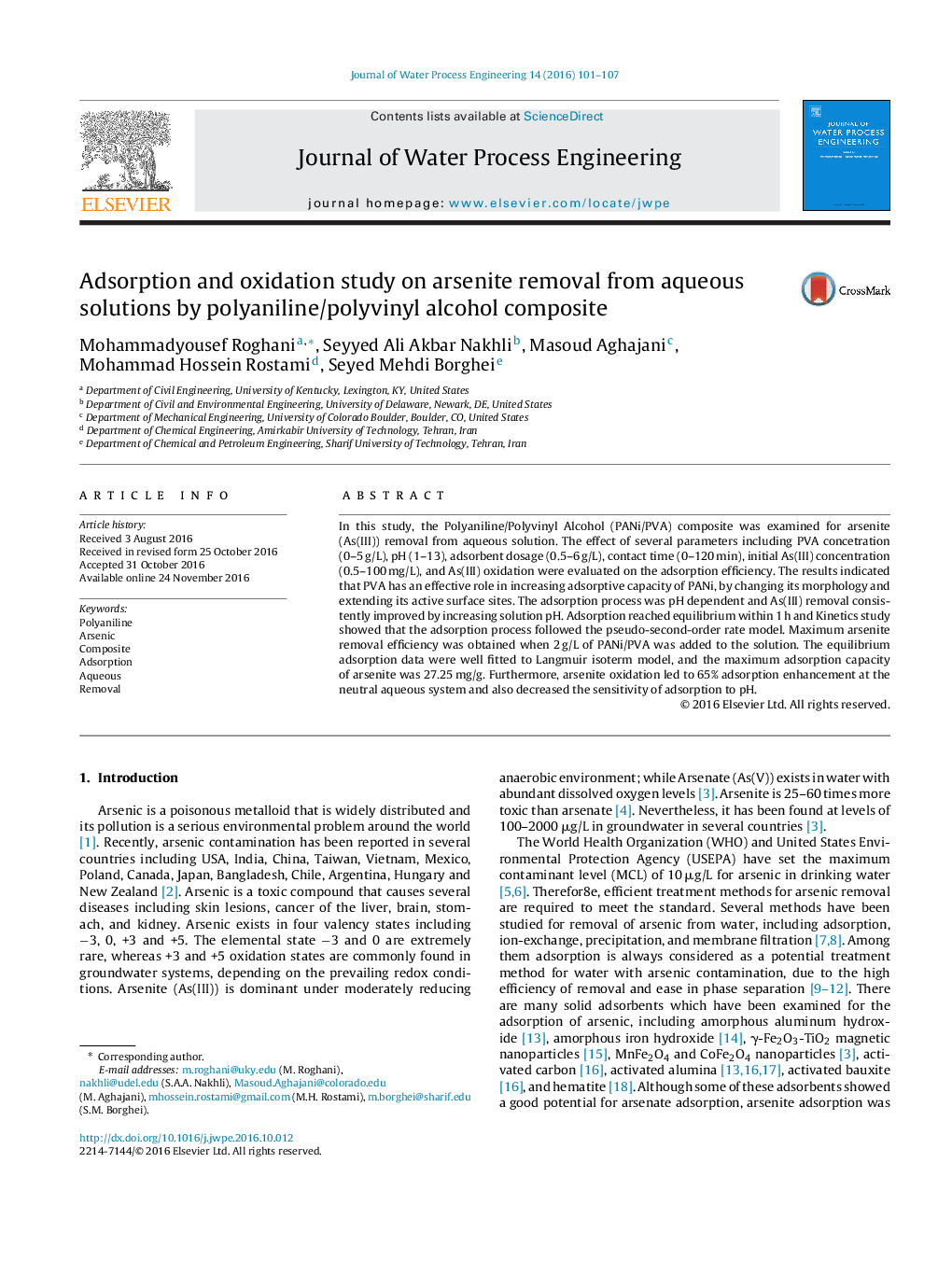| Article ID | Journal | Published Year | Pages | File Type |
|---|---|---|---|---|
| 4910017 | Journal of Water Process Engineering | 2016 | 7 Pages |
Abstract
In this study, the Polyaniline/Polyvinyl Alcohol (PANi/PVA) composite was examined for arsenite (As(III)) removal from aqueous solution. The effect of several parameters including PVA concetration (0-5Â g/L), pH (1-13), adsorbent dosage (0.5-6Â g/L), contact time (0-120Â min), initial As(III) concentration (0.5-100Â mg/L), and As(III) oxidation were evaluated on the adsorption efficiency. The results indicated that PVA has an effective role in increasing adsorptive capacity of PANi, by changing its morphology and extending its active surface sites. The adsorption process was pH dependent and As(III) removal consistently improved by increasing solution pH. Adsorption reached equilibrium within 1Â h and Kinetics study showed that the adsorption process followed the pseudo-second-order rate model. Maximum arsenite removal efficiency was obtained when 2Â g/L of PANi/PVA was added to the solution. The equilibrium adsorption data were well fitted to Langmuir isoterm model, and the maximum adsorption capacity of arsenite was 27.25Â mg/g. Furthermore, arsenite oxidation led to 65% adsorption enhancement at the neutral aqueous system and also decreased the sensitivity of adsorption to pH.
Related Topics
Physical Sciences and Engineering
Chemical Engineering
Chemical Engineering (General)
Authors
Mohammadyousef Roghani, Seyyed Ali Akbar Nakhli, Masoud Aghajani, Mohammad Hossein Rostami, Seyed Mehdi Borghei,
